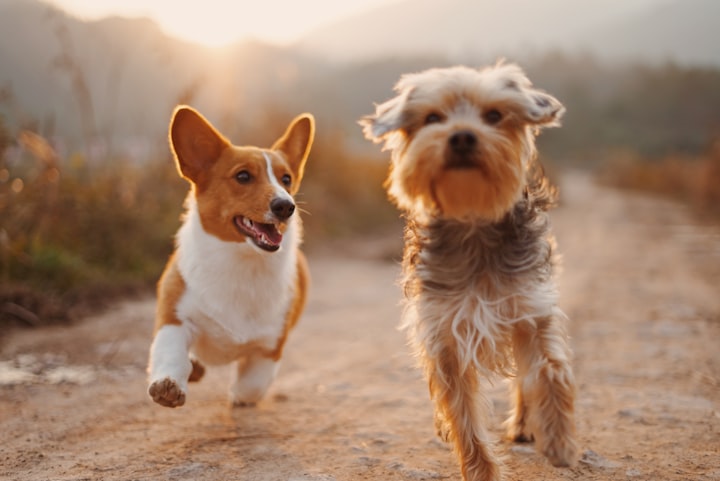Six Dog Behaviors Explained
Why Your Dog Does These 6 Things
6 Dog Behaviors Explained
Have you ever wondered why your dog does certain things? For example, why do they bark when someone comes to the door, or wag their tail when they're happy? Chances are, there's a reason behind it. In this blog post, we'll take a look at 6 different dog behaviors and try to explain what's going on behind them. So if you've ever wondered why your pup does what they do, read on! And feel free to share with other dog lovers who might be curious too.
Dogs Bark to Communicate - It's Their Way of Talking
Dogs bark for a lot of different reasons, but the most common is to get our attention. Barking can be used to alert us to danger, show excitement, or just as a way of getting our attention. Dogs use their barks and howls like we use words in conversation, to communicate with us and other animals. In order to get the most out of communication with your pup, take time to understand why they're barking - it's their way of talking!
Why Dogs Chew on Things
From tennis shoes to furniture and everything in between, dogs tend to chew on things they find around them, and this behavior is usually a result of their naturally curious nature. To a dog, the world is full of exciting objects that just beg to be explored by their mouths! For most dogs, the act of chewing is incredibly satisfying; it helps keep their teeth healthy and can help reduce boredom when there isn’t much else to do. If you’re among those with a dog who loves to chew, don't worry - it’s simply an innate quality that all dogs share! On the plus side, you could always redirect your dog's energy towards more suitable items such as chew toys so that your pup can avoid inevitable trouble down the road.
Why Dogs Dig A Lot
Digging is an instinctual behavior for dogs. As natural problem solvers, they use it to explore their environment and to find things that are hidden from them. It can also be a great form of exercise; engage your pup in a game of dig and you’ll both get some quality exercise. This type of activity should always be supervised - set boundaries on where it’s okay to dig and make sure no destructive behaviors occur, such as digging up your plants!
Why Dogs Chase Their Tails
Have you ever seen a dog chasing its tail? While it might look like a funny game the pup is playing, it's actually an evolutionary behavior. When dogs chase their tails, they are usually trying to catch something either real or imagined that's just outside of their reach. It could be a pesky fly or some other piece of prey they can't quite get to. For years, researchers have been studying this peculiar behavior and have learned more about why dogs do it and how to stop them. That said, if your pup has an occasional moment of chasing its tail, there's no need to worry too much - it's all part of being a dog!
Why Dogs Follow People Around
Dogs like humans because they provide consistent companionship and attention - something dogs often lack if they are not adopted. Furthermore, certain breeds have been bred to be loyal and devoted to humans, keenly following us wherever we go. All dogs require proper socialization so that they build a trusting bond with humans. This includes socializing dogs with other people and animals as well as introducing them to different environments. Doing this will ensure that your pup is comfortable following you around and builds an unbreakable bond with you. With a few steps, you can ensure your beloved pup stays by your side at all times!
Why Dogs Lick
Many dog owners are all too familiar with their pup giving the furniture, door frames, and other items around the house a good lick. This is a sign of affection that dogs use to communicate with each other and even people they like. While it can be incredibly gross, licking is also part of how dogs learn about their environment, as they use their tongue as if it's another sense organ. Dogs will lick objects to gain information on them such as texture, temperature, taste, moisture level and more. In some cases it may also indicate hunger or boredom if they're not receiving enough attention or stimulation. All in all, sometimes licking may just mean your pup loves you enough to give something a big ol' smooch!
Conclusion
From barking to digging, it’s incredible how many ways our furry friends communicate and explore their environment. Whether they are chasing their tail or following you around, they want to interact with us because of the strong bond that is created between a dog and its owner. And when they come offering an excited lick or two, take it as a sign of love and appreciation. At the same time, be aware that licking may also be indicative of them trying new things - use your best judgement!
From all that we've learned here today, it's clear that dogs are cognizant animals with amazing communication skills. In other words: they may not speak human language like we do, but our four-legged friends find novel ways to connect with us every day. Even when it appears as though their behavior is nonsensical, there's often more to it than meets the eye. What does your dog do that makes you wonder? Leave a comment and let us all know—we'd love to hear from you!
About the Creator
Timothy A Rowland
I’m an every day human Xennial from the United States. I have many interest. I just want to improve your life and maybe entertain you. Available for editing and LeadsLeap projects at: https://www.fiverr.com/greyhatcompany







Comments
There are no comments for this story
Be the first to respond and start the conversation.